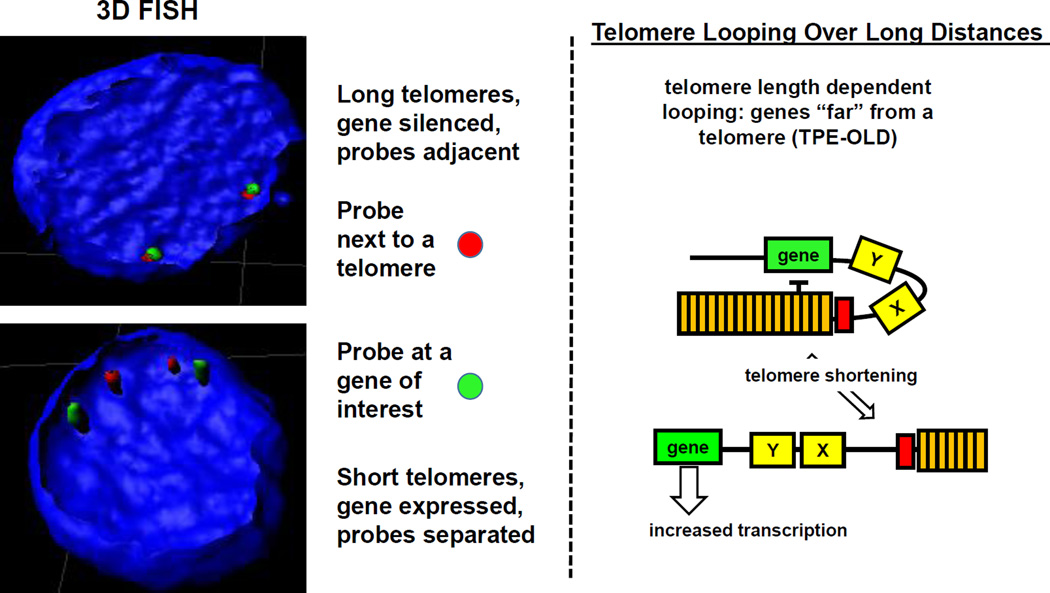Figure 4.
Recent evidence suggests telomere length can regulate genes over long distances. There are genes several megabases from a telomere that are silenced in young cells, expressed in old cells and repressed again when TERT is introduced into old cells. Using 3D FISH with a subtelomeric probe and a distal gene of interest, one can observe adjacent probe signals in young cells and separated signals in old cells with short telomeres. This model provide an explanation for how gene expression changes can occur during aging without initiating a DNA damage signal. As an example, the model (right side) shows a schematic of how telomeres when long could repress the expression of a specific gene over long distances and when telomeres shorten as part of normal aging, expression of that specific gene could change. Genes (X and Y in the illustration) although closer to the telomere are not regulated by this mechanism (TPE-OLD). Previously it has been shown that ISG15, desmoplaskin, C1S, and SORBS2 are regulated by this mechanism (62, 63).

